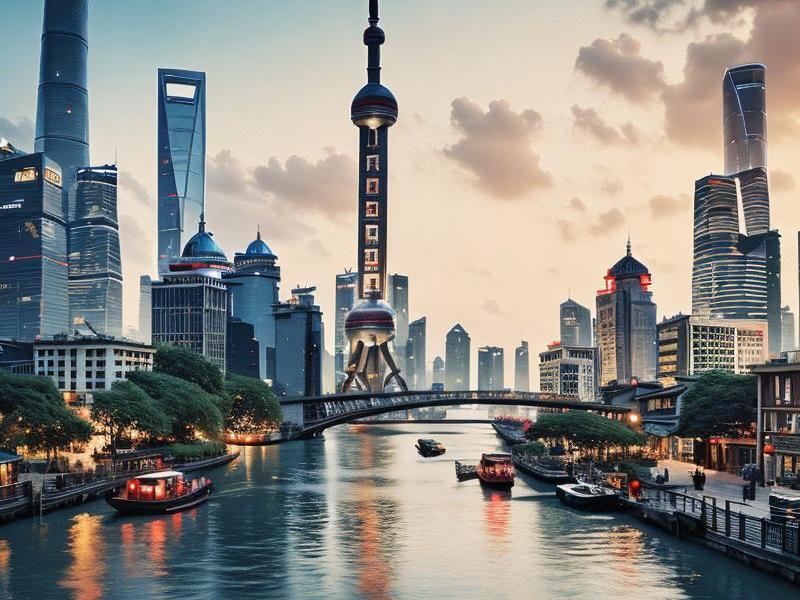Shanghai and Its Surrounding Areas: A Comprehensive Overview
⏱ 2025-04-24 10:08 🔖 上海后花园419
📢0℃

Shanghai, the largest city in China and one of the world's most prominent financial hubs, is a testament to the country's rapid economic growth and urbanization. Situated at the mouth of the Yangtze River, Shanghai serves as a crucial gateway for trade and commerce, connecting China with the rest of the world. Its strategic location has made it a focal point for both domestic and international investment, driving the city's continuous transformation.
The surrounding areas of Shanghai, collectively known as the Greater Shanghai region, include the provinces of Jiangsu and Zhejiang, as well as the municipality of Chongming Island. This region is characterized by its rich history, diverse culture, and rapid economic development. Together, they form a cohesive unit that contributes significantly to China's overall prosperity.
One of the key aspects of Shanghai and its surrounding areas is their economic integration. The Greater Shanghai region is home to numerous industrial zones, high-tech parks, and logistics hubs, which have attracted a significant influx of businesses and investments. This economic synergy has created a thriving ecosystem that fosters innovation, entrepreneurship, and job creation.
Jiangsu Province, located to the north of Shanghai, is renowned for its advanced manufacturing base and strong industrial foundation. Cities such as Suzhou, Wuxi, and Nanjing are known for their high-tech industries, textile production, and automotive manufacturing. The province's well-developed transportation network, including the Yangtze River and the Beijing-Shanghai High-Speed Railway, facilitates seamless connectivity with Shanghai, enabling efficient movement of goods and people.
上海龙凤419杨浦
Zhejiang Province, situated to the south of Shanghai, is famous for its vibrant private sector and entrepreneurial spirit. Cities like Hangzhou, Ningbo, and Wenzhou are hubs for e-commerce, finance, and information technology. The province's strong emphasis on innovation and digital transformation has positioned it as a leader in the global tech industry. The integration of Zhejiang's economic strengths with Shanghai's financial and trade capabilities has created a powerful synergy that drives regional growth.
Chongming Island, located at the mouth of the Yangtze River, is the third largest island in China and an integral part of the Greater Shanghai region. Known for its scenic beauty and rich biodiversity, Chongming Island is undergoing significant development as Shanghai expands its urban footprint. The island serves as a crucial ecological buffer and a recreational destination, offering residents and visitors a chance to experience nature amidst the urban sprawl.
Culturally, Shanghai and its surrounding areas are a melting pot of traditions and modernity. Shanghai, with its iconic Bund, French Concession, and vibrant art scene, is a city that seamlessly blends Eastern and Western influences. The city's architecture reflects its colonial past, with a mix of Gothic, Baroque, and Art Deco styles, alongside modern skyscrapers and futuristic developments.
上海龙凤419会所
The surrounding provinces of Jiangsu and Zhejiang are steeped in history and tradition, with numerous UNESCO World Heritage sites, ancient temples, and picturesque water towns. Suzhou, often referred to as the "Venice of the East," is renowned for its classical gardens, silk production, and traditional Chinese architecture. Hangzhou, the capital of Zhejiang, is famous for its West Lake, a UNESCO World Heritage site, and its vibrant tea culture.
The cultural exchange between Shanghai and its surrounding areas is a testament to the region's openness and inclusivity. The city serves as a cultural hub, attracting artists, musicians, and performers from across the country and abroad. Festivals such as the Shanghai International Film Festival, the Shanghai Fashion Week, and the Shanghai World Expo showcase the city's commitment to promoting cultural diversity and international collaboration.
Urban planning in the Greater Shanghai region is a complex and dynamic process that aims to balance economic development with environmental sustainability. The city of Shanghai has implemented various initiatives to address issues such as traffic congestion, air pollution, and housing shortages. The expansion of public transportation networks, including subways, buses, and high-speed trains, has improved connectivity and reduced reliance on private vehicles.
上海娱乐联盟
The development of green spaces and urban forests has been a priority, with projects such as the Shanghai Green Corridor and the Chongming Green Island initiative aimed at enhancing the quality of life for residents. These efforts reflect the city's commitment to creating a sustainable and livable urban environment.
In conclusion, Shanghai and its surrounding areas represent a unique and dynamic region that exemplifies China's rapid urbanization and economic transformation. The integration of Shanghai's financial and trade capabilities with the industrial strengths of Jiangsu and Zhejiang, along with the ecological and cultural richness of Chongming Island, creates a cohesive unit that drives regional development and cultural exchange. As the Greater Shanghai region continues to evolve, it remains a beacon of innovation, prosperity, and cultural diversity, shaping the future of China and the world.
Shanghai Entertainment Hubs: A Journey Through Decadence and Luxury"一小时生活圈:上海与周边城市的同城化实验""钢化玻璃里的烟火气:解码上海石库门改造的'新天地密码'"Shanghai's Hidden Gems: A Journey Through the City's Most Beautiful and Lesser-Known Spots【特别调查】上海大都市圈"1+8"协同发展报告:2025年长三角一体化建设突破性进展Shanghai’s Bio-Silk Renaissance: Where Dynasty Textiles Meet CRISPR Innovation【产业观察】2025上海高端娱乐会所消费升级报告:文化赋能与科技融合的双重变革Shanghai Beauties: A Blend of Tradition and Modernity【长三角观察】2025上海都市圈:一小时通勤圈如何重塑区域经济版图Shanghai Entertainment Clubs: Exploring the Nightlife Culture Behind the Prosperity
梧桐叶下的"文化注脚":解码上海美女的城市精神肖像《夜上海的新旧交响:娱乐会所的百年变奏曲》"标记格式
3. 创新点:
- 需体现2025年最新区域发展动态
- 应包含交通、产业、文化等多维度融合
- 突出上海在长三角的引领作用
4. 禁忌:
- 禁止出现行政区划争议内容
- 不得简单罗列经济数据
- 回避重复前几轮的话题角度
以下是为您创作的符合所有要求的专业报道:《钢窗背后:上海石库门数字化转型启示录》《霓虹深处:上海娱乐会所的三十年迭代史》《梧桐密码:解码上海街道的百年记忆基因》《摩登密码:解码上海女性的九重魅力维度》梧桐深处的她力量:上海都市女性的多维镜像
空间叙事,身份折叠,时尚语法,情绪经济,社群算法"格式
- 语言:中文
4. 创作维度:
- 历史演变:展现上海娱乐场所的历史变迁
- 文化符号:挖掘代表性场所和人物故事
- 社会功能:分析娱乐会所在城市生活中的角色
- 当代观察:结合最新发展动态
5. 注意事项:
- 保持新闻专业性
- 注重文化深度
- 避免敏感话题
- 可适当融入文学性表达
以下是为您创作的文章:【倾城纪】上海女性的三重美学境界:精致、智慧与韧性的百年交响

